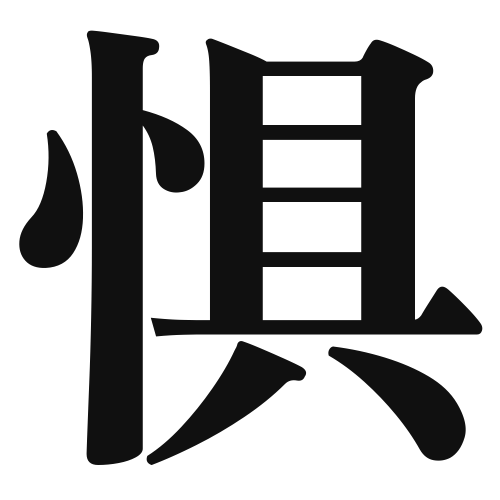1. Overview of Meaning
The kanji “惧” (gu) means “fear” or “to be afraid.” It conveys a sense of anxiety or apprehension about something that may happen.
2. Formation and Radical
Formation of the Kanji: The kanji “惧” is a phonetic compound (形声文字), which combines the elements of “心” (heart) and “具” (to possess). The heart component indicates an emotional aspect, while “具” contributes to the meaning of having or experiencing fear.
Radical: The radical of “惧” is “心” (heart), which is often associated with emotions and feelings.
3. Examples of Usage
Common Words and Phrases:
- 惧れ (おそれ, osore) – fear, dread
- 恐惧 (きょうぐ, kyōgu) – terror, fear
Example Sentences in Daily Conversation:
- 彼は高い場所を恐れている。 (かれはたかいばしょをおそれている。) – He is afraid of high places.
- その映画は私に恐怖を与えた。 (そのえいがはわたしにきょうふをあたえた。) – That movie gave me fear.
4. Synonyms and Antonyms
Similar Kanji:
- 恐 (きょう, kyō) – also means “fear,” but often implies a stronger sense of terror.
- 怖 (こわ, kowa) – means “scary” or “frightening,” often used to describe something that induces fear.
Antonyms:
- 勇 (ゆう, yū) – means “courage” or “bravery,” representing the opposite of fear.
5. Cultural and Historical Background
Relation to Japanese Culture: The concept of fear is deeply embedded in Japanese culture, often reflected in literature, art, and folklore. The kanji “惧” is used in various contexts to express emotional states.
Proverbs and Idioms:
- 恐れ入ります (おそれいります, osore irimasu) – a polite expression meaning “I am afraid” or “I apologize,” often used to show humility.
